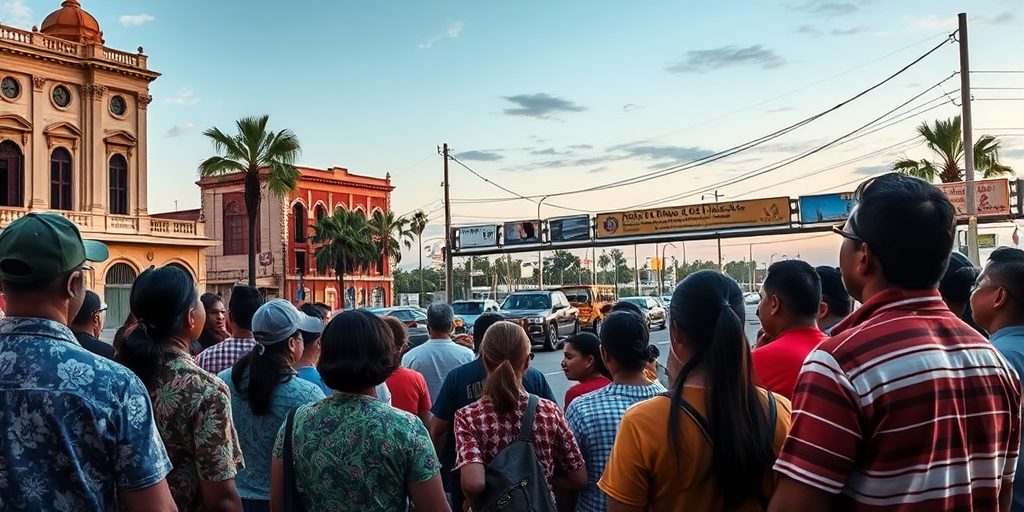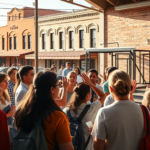Major Cocaine Bust at Los Indios Bridge: Impact on the Valley
In a significant find, U.S. Customs and Border Protection officers seized over 42 pounds of cocaine at the Los Indios International Bridge, a critical port of entry in South Texas near Brownsville. With an estimated street value surpassing $572,235, the bust dealt a notable blow to drug trafficking operations crossing into the Rio Grande Valley (RGV) from Mexico.
Details of the Seizure
The cocaine, concealed within a 2011 Honda driven by a 32-year-old San Benito resident, was discovered during a secondary inspection on August 14. According to CBP reports, 19 packages of alleged cocaine were hidden within the vehicle, prompting immediate action. The suspect was taken into custody by Homeland Security Investigation special agents, who have since initiated a thorough criminal investigation.
Chief CBP Officer Frank Martinez highlighted the significance of such operations by stating, “Our officers are on the front lines, ensuring the safety and security of our communities. This seizure exemplifies our commitment to curbing the flow of illegal narcotics into the United States.”
Local Implications for the Rio Grande Valley
The seizure underscores the ongoing battle against drug trafficking in the RGV, a region that has long been a focal point for such activities due to its proximity to the Mexico-U.S. border. The Valley’s unique position as a transportation hub makes it a critical target for drug cartels attempting to move narcotics into the country, hence the heightened vigilance of enforcement agencies.
Valley residents have shown support for the efforts of CBP officers. Maria Gonzalez, a local community leader from Brownsville, emphasized the need for continued diligence: “Our community’s safety is paramount. Seeing such efforts validates our continued cooperation with law enforcement to combat these threats.”
Historical Context and Community Concerns
This incident adds to a string of similar occurrences in recent years, reflecting broader concerns about narcotics infiltration in South Texas. Previous raids and seizures have highlighted a persistent challenge for authorities attempting to dismantle sophisticated smuggling networks operating at border crossings.
Community members and stakeholders, including businesses and local governments, have expressed concerns over potential collateral impacts. Frequent drug busts can cast a shadow on the region’s image, affecting tourism and local investment despite the proactive actions of law enforcement.
Future Implications for the Region
While the immediate impact of the cocaine seizure is a disruption in the supply chain for traffickers, ongoing vigilance and enforcement are essential in maintaining security. Political leaders have called for additional resources and technology to be allocated for border operations to prevent future smuggling attempts and protect local interests.
Moreover, the incident emphasizes the importance of community programs designed to educate residents and youth about the dangers of drug use and trafficking. Interventions such as these are pivotal in addressing the root causes of drug-related activities and fostering resilience within the RGV.
Dr. Juan Castillo, a criminologist at the University of Texas Rio Grande Valley, stresses the importance of multifaceted approaches: “Beyond enforcement, we must invest in community education and economic initiatives to offer alternatives to those who might be vulnerable to the allure of quick money through illegal acts.”
A Balanced Perspective on the Issue
While CBP’s actions are commendable, balanced reporting requires acknowledgment of differing perspectives. Some critics argue that despite considerable efforts, the flow of narcotics continues to challenge border security. They call for broader policies addressing demand-side factors and international cooperation with neighboring countries to tackle the issue holistically.
However, officers and local officials reassert the necessity of stringent border measures. Former CBP officer Daniel Hernandez, now a consultant on border security, points out, “The RGV is both a gateway and a shield. Without robust enforcement, the cost to both public safety and future generations in the Valley would be incalculable.”
For concerns or tips related to drug trafficking and border security, the public is encouraged to contact the Rio Grande Valley Border Patrol sector or local law enforcement offices. Continued community engagement plays a vital role in sustaining efforts to uphold the safety and security of Valley residents.
Conclusion
The Los Indios cocaine seizure not only reflects a significant victory for U.S. law enforcement against cross-border drug trafficking but also highlights the ongoing challenges faced by communities in the Rio Grande Valley. As local stakeholders, officials, and residents navigate the implications of such a find, the need for cooperation, vigilance, and comprehensive strategies becomes ever more essential to ensure the prosperity and safety of South Texas.







